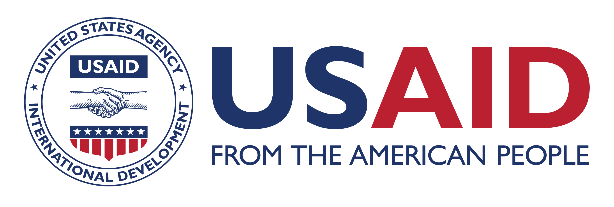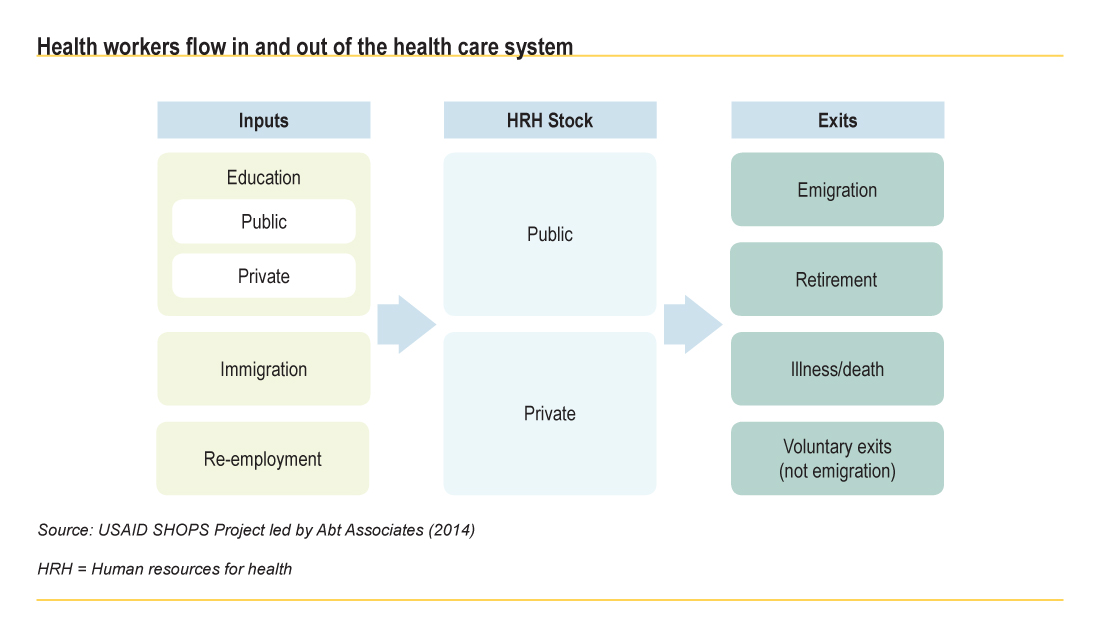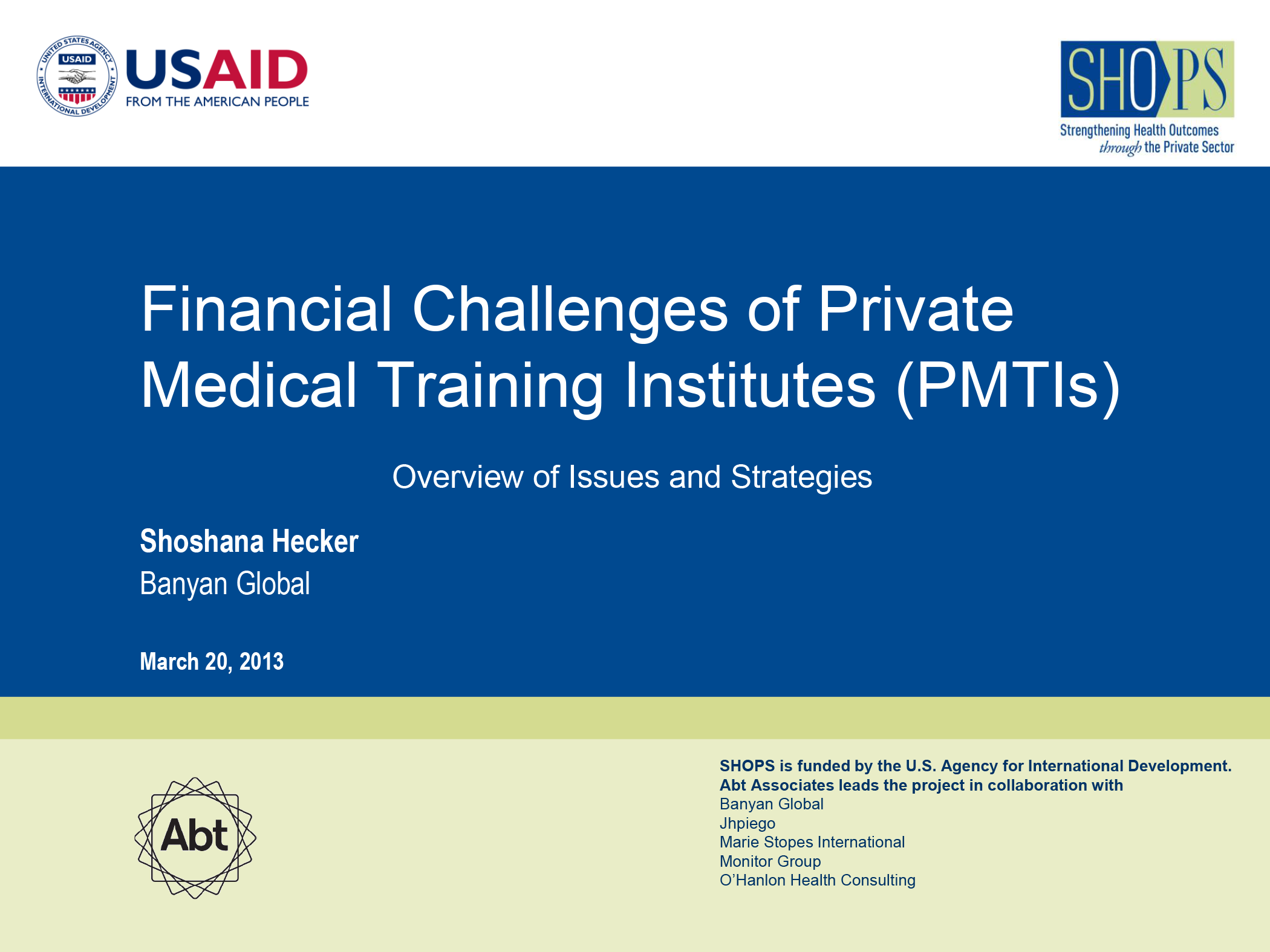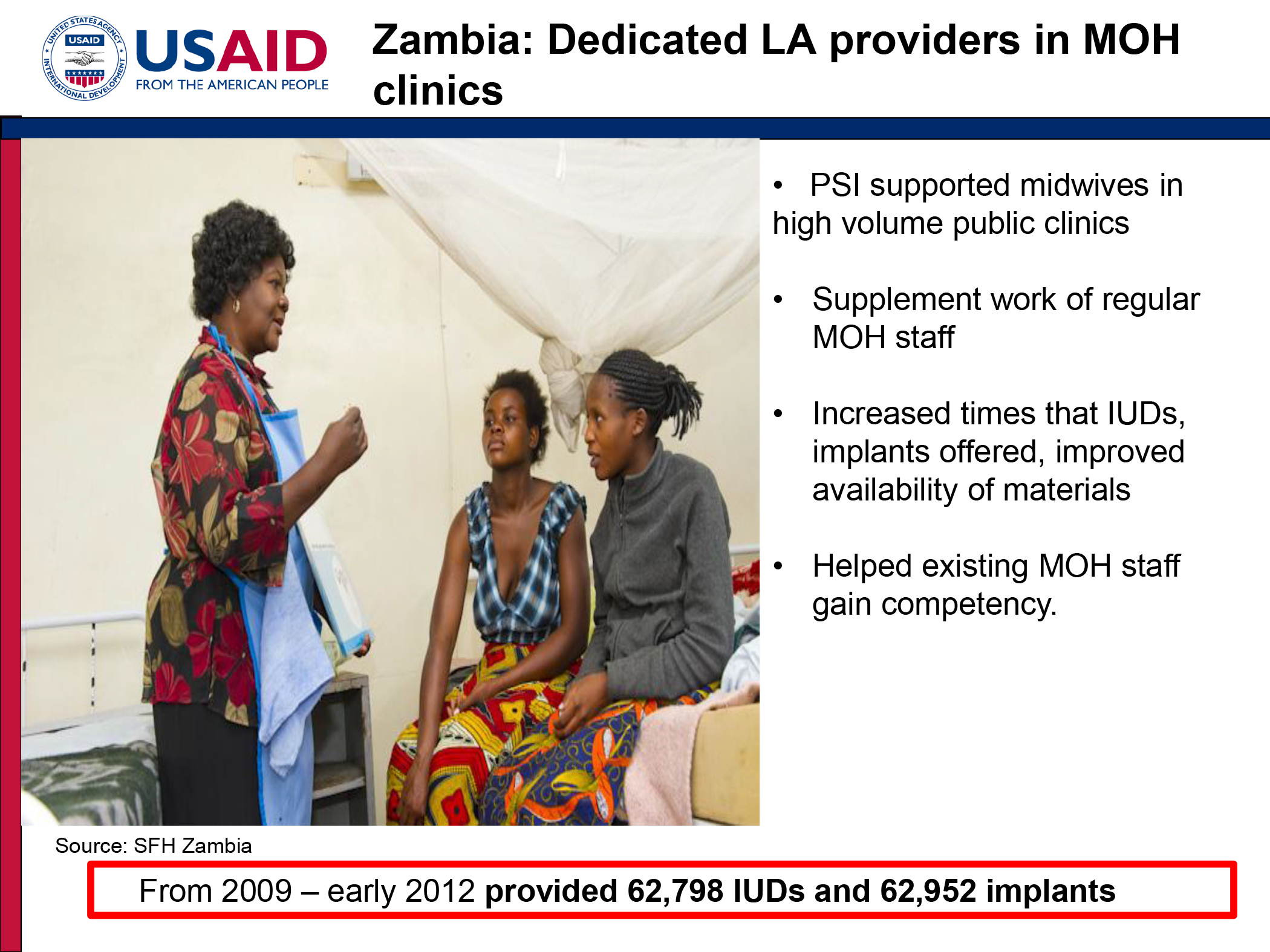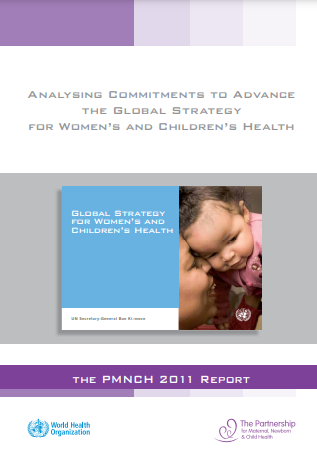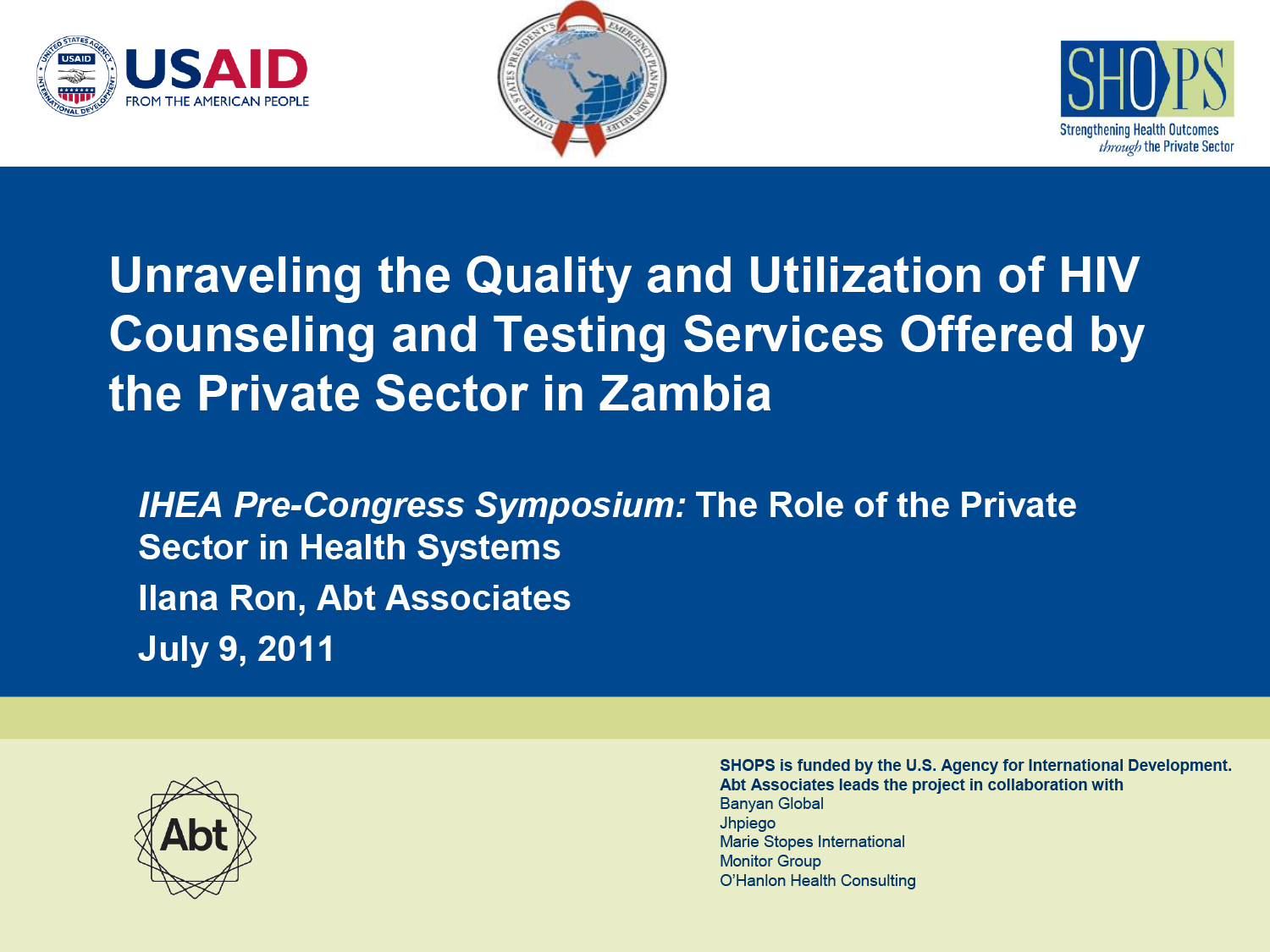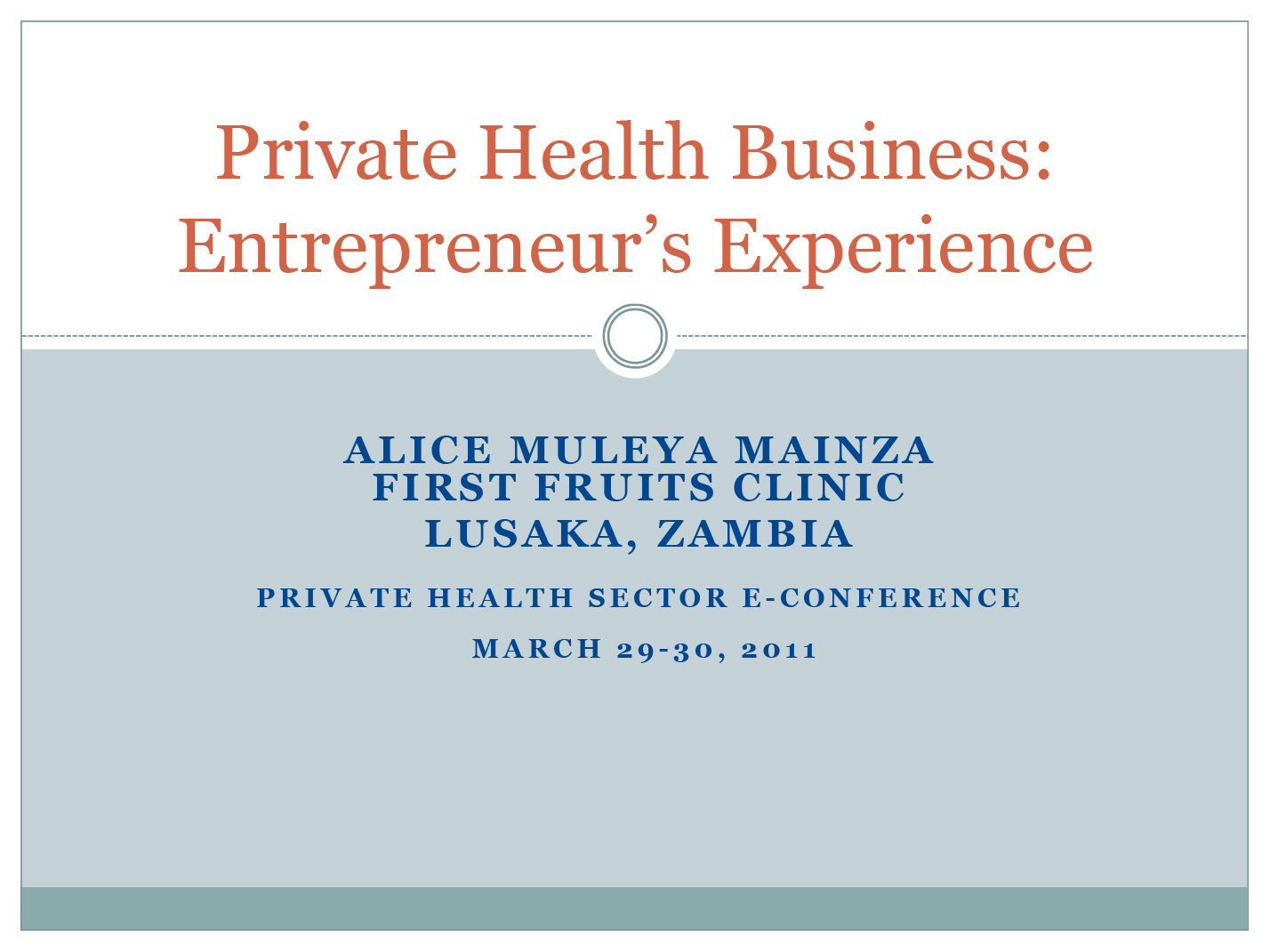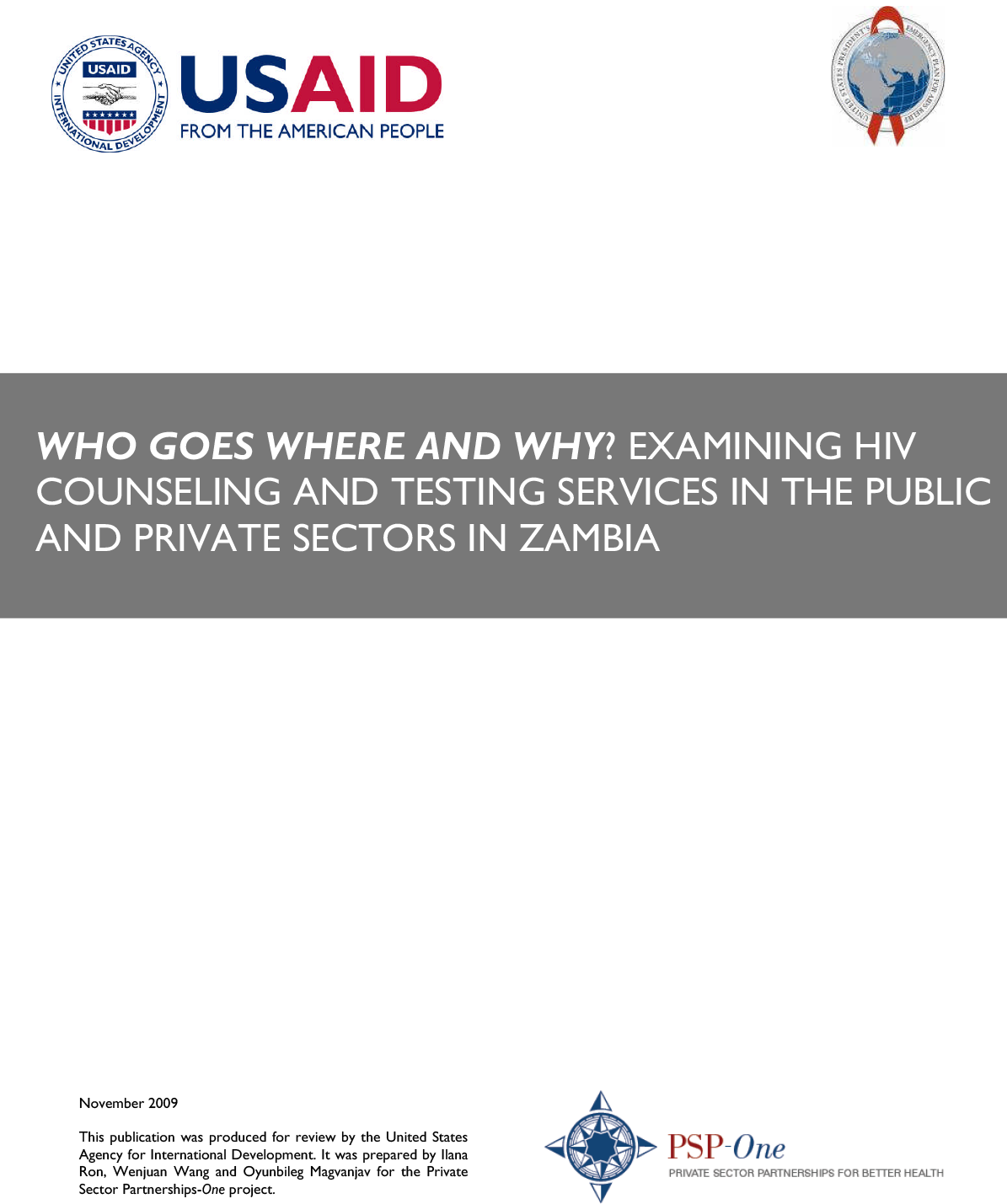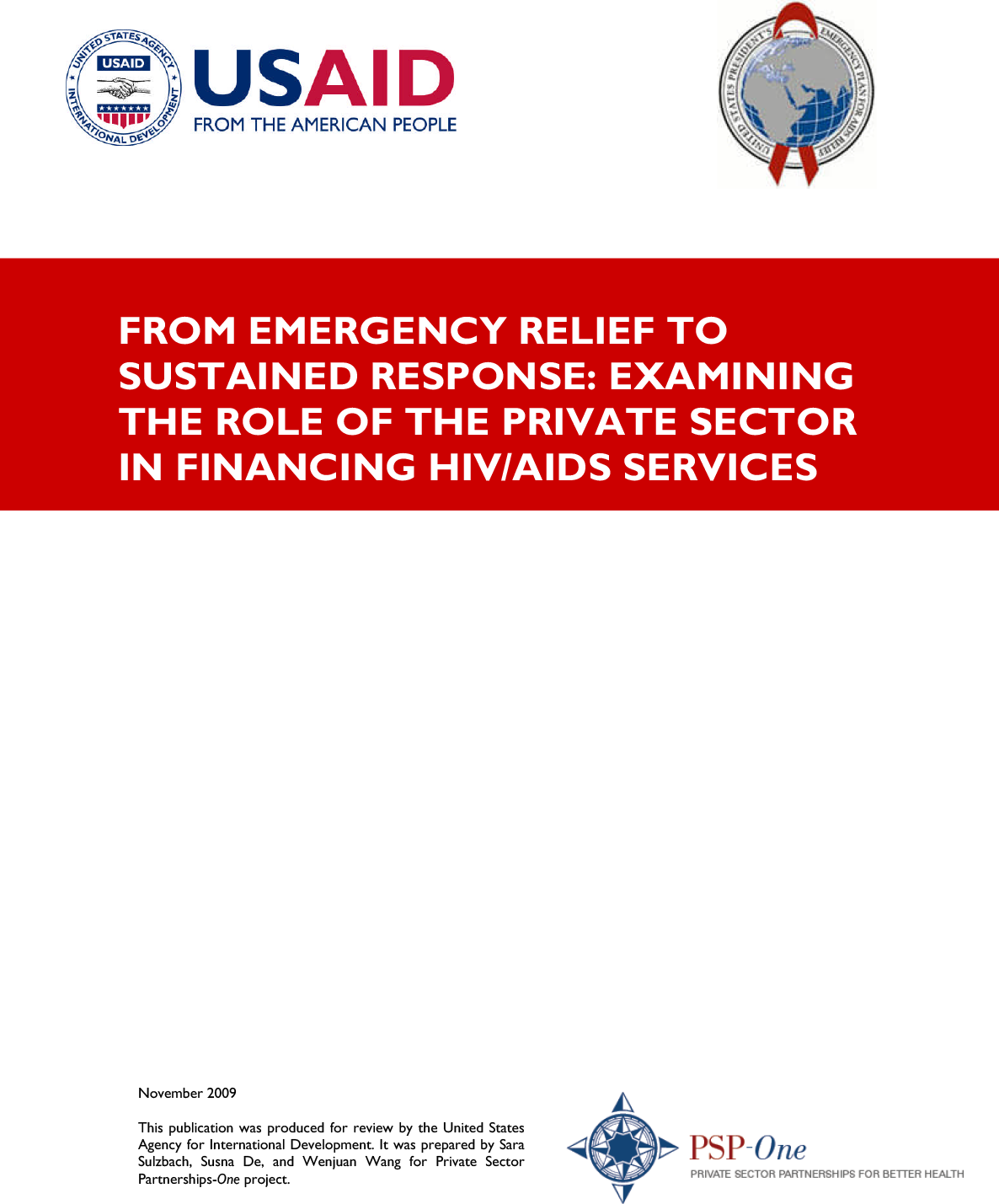
Resource Library
Financing Medical Education through the Private Sector
From 2010 through 2013, the SHOPS project implemented a series of pilot activities to explore the feasibility of introducing private sector health education financing mechanisms. SHOPS explored private sector solutions to help meet ambitious targets from the U.S. President’s Emergency Plan for AIDS Relief for training new health care workers. This report shares the project’s work with private pre-service education financing in Malawi, Rwanda, Tanzania, and Zambia. The authors capture major lessons from these pilot efforts and provide an evidence-based framework that policymakers and donors can use to improve health education financing.
Resource Type : Report
Country : Malawi, Tanzania, Zambia
Year : 2014-12-05T00:00:00
Language : English
Project : SHOPS

Resource Library
Unraveling the Quality of HIV Counseling and Testing Services in the Public and Public Sectors in Zambia
This study examines HIV counseling and testing services in the public and private sectors, including private for-profit, NGO, and faith-based sectors in Copperbelt and Luapula in Zambia. The study used five primary data collection methods to gauge quality of these services, utilizing a mixed methods approach. The study shows concerning levels of underperformance in HIV counseling and testing services across the sectors, particularly in counseling about key risk-reduction methods.
This study was published in Health Policy and Planning in July 2014.
Resource Type : Brief
Country : Zambia
Year : 2014-08-25T00:00:00
Language : English
Project : SHOPS

Resource Library
Financial Challenges of Private Medical Training Institutes (PMTIs)
This presentation reviews some of the major financial challenges private medical institutions deal with on a regular basis. It offers two case studies—one from Malawi and one from Zambia—to help participants think through the problems they face and brainstorm solutions. The presentation was given as part of a panel discussion at a capacity summit held by the Regional AIDS Training Network in March 2013.
Resource Type : Presentation
Country : Malawi, Zambia
Year : 2013-03-21T00:00:00
Language : English
Project : SHOPS

Resource Library
The Promise of Long Acting and Permanent Methods
Dr. Jim Shelton gives an overview of long-acting and permanent methods of family planning, including programmatic considerations and country examples in service delivery and partnerships in the private sector. Shelton serves as science advisor for the Bureau for Global Health. Download a PDF of the presentation by clicking on the download button, or view a recording of the presentation.
Resource Type : Presentation
Country : Malawi, Mali, Zambia
Year : 2012-05-10T00:00:00
Language : English
Project : SHOPS

Resource Library
The Private Sector Role in HIV/AIDS in the Context of an Expanded Global Response
Global financing for the HIV response has reached unprecedented levels in recent years. Over $10 billion were mobilized in 2007, an effort credited with saving the lives of millions of people living with HIV (PLHIV). A relatively unexamined aspect of the global HIV response is the role of the private sector in financing HIV/AIDS services. As the nature of the response evolves from emergency relief to long-term sustainability, understanding current and potential contributions from the private sector is critical.
This paper examines trends in private sector financing, management and resource consumption related to HIV/AIDS in five sub-Saharan African countries, with a particular emphasis on the effects of recently scaled-up donor funding on private sector contributions. We analyzed National Health Accounts HIV/AIDS subaccount data for Kenya, Malawi, Rwanda, Tanzania and Zambia between 2002 and 2006. HIV subaccounts provide comparable data on the flow of HIV/AIDS funding from source to use.
Findings indicate that private sector contributions decreased in all countries except Tanzania. With regards to managing HIV/AIDS funds, non-governmental organizations are increasingly controlling the largest share of resources relative to other stakeholders, whereas private for-profit entities are managing fewer HIV/AIDS resources since the donor influx. The majority of HIV/AIDS funds were spent in the public sector, although a considerable amount was spent at private facilities, largely fueled by out-of-pocket (OOP) payments. On the whole, OOP spending by PLHIV decreased over the 4-year period, with the exception of Malawi, demonstrating that PLHIV have increased access to free or subsidized HIV/AIDS services. Our findings suggest that the influx of donor funding has led to decreased private contributions for HIV/AIDS. The reduction in private sector investment and engagement raises concerns about the sustainability of HIV/AIDS programs over the long term, particularly in light of current global economic crisis and emerging competing priorities.
This article was published in Health Policy and Planning 2011.
Resource Type : Brief
Country : Kenya, Malawi, Rwanda, Tanzania, Zambia
Year : 2011-10-28T00:00:00
Language : English
Project : SHOPS

Resource Library
Analysing Commitments to Advance the Global Strategy for Women’s and Children’s Health
This report seeks to further our collective understanding of the current WHO Global Strategy commitments, facilitating more effective advocacy to advance the Every Woman, Every Child effort. It analyzes opportunities and challenges in advancing Global Strategy commitments, stakeholders’ perceptions about the added value of the Global Strategy, and next steps to strengthen advocacy, action and accountability, taking forward the recommendations of the Commission on Information and Accountability for Women’s and Children’s Health.
Resource Type : Report
Country : Zambia
Year : 2011-09-29T12:00:00
Language : English
Project : SHOPS

Resource Library
Unraveling the Quality and Utilization of HIV Counseling and Testing Services Offered by the Private Sector in Zambia
"Unraveling the Quality and Utilization of HIV Counseling and Testing Services Offered by the Private Sector in Zambia" was prepared for the IHEA Pre-Congress Symposium, July 2011. For further information see also "Who Goes Where and Why? Examining HIV Counseling and Testing Services in the Public and Private Sectors in Zambia," the PSP-One report, January 2010, and the PSP-One brief with the same title, November 2009.
Resource Type : Presentation
Country : Zambia
Year : 2011-07-08T13:13:00
Language : English
Project : SHOPS

Resource Library
Private Health Business: Entrepreneur's Experience
A narrated presentation contributed by Alice Muleya Mainza of First Fruits Clinic Lusaka, Zambia to the SHOPS Access to Finance e-Conference held on March 29-30, 2011. To view the narrated presentation from the Access to Finance e-Conference, please visit: http://icohere-presentations.com/Presentations/SHOPS/2011/A2F/Meuleya-Mainza/player.html
Resource Type : Presentation
Country : Zambia
Year : 2011-03-29T00:00:00
Language : English
Project : SHOPS

Resource Library
Who Goes Where and Why? Examining HIV Counseling and Testing Services in the Public and Private Sectors in Zambia
Zambia is a small republic in Sub-Saharan Africa with a population of nearly 12 million. Unemployment and poverty levels are significant concerns: 80 percent of Zambians live on less than US $2 per day. Of the nine provinces in Zambia, two—Lusaka and Copperbelt—are predominantly urban, while the remaining seven are primarily rural. The urban population is 4.5 million. HIV/AIDS prevalence is significant, with an adult prevalence rate of 14.3 percent (16.1percent among women and 12.3 percent among men), according to the most recent Zambian Demographic and Health Survey (ZDHS 2007). People living in urban areas are more likely to be infected than those in rural areas (20 percent versus 10 percent). HIV prevalence among adults ranges from just under 7 percent in the Northern and Northwest provinces (6.8 percent and 6.9 percent, respectively) to 20.8 percent in Lusaka province. The country faces a severe shortage in human resources for health. In 2006, Zambia recorded only 646 doctors—just 28 percent of its target of 2,300 (Schatz 2008). The same year the country recorded only 6,096 nurses, well below the national target of 16,732 nurses. Currently, the Zambian government finances 46.8 percent of total health expenditures, while private sources—including donor-funded NGOs, private firms, and households—finance the remaining 53.2 percent (WHO 2008). The private sector, including the private for-profit sector, plays an important role in providing HIV and other health care services to Zambians. More information is needed, however, about why clients utiliize the private for-profit sector for HIV services and the quality of those services. The role of the private for-profit sector in offering VCT services is of particular interest for the Private Sector Partnerships-One (PSP-One) project. PSP-One is the United States Agency for International Development's (USAID) flagship global project to increase the private sector's provision of high-quality reproductive health, family planning, and HIV products and services in the developing world.
Resource Type : Report
Country : Zambia
Year : 2010-01-12T17:15:00
Language : English
Project : SHOPS

Resource Library
From Emergency Relief to Sustained Response: Examining the Role of the Private Sector in Financing HIV/AIDS Services
This paper examines private sector contributions, as compared to donor and public sector investments, to HIV/AIDS financing in five sub–Saharan African countries: Kenya, Malawi, Rwanda, Tanzania, and Zambia. We use data not commonly associated with the private sector – National Health Accounts (NHA). NHA is a tool for comprehensively tracking resources for health care, including public, private, and donor contributions. It follows the flow of funds through a country's health care system, making it possible to answer the following questions: How much money was spent? Where do the funds come from? Who manages the money? Where and how is the money spent? While other papers have documented funding for HIV/AIDS services at the macro level, the use of NHA data allows for closer inspection of the flow of funds through the health system at the country level (Bernstein and Sessions, 2007). To our knowledge, this is the first application of NHA data to an examination of private sector contributions to financing HIV/AIDS services.
Resource Type : Report
Country : Kenya, Malawi, Rwanda, Tanzania, Zambia
Year : 2009-12-04T11:00:00
Language : English
Project : SHOPS
Pagination
- Previous page
- Page 2
- Next page

